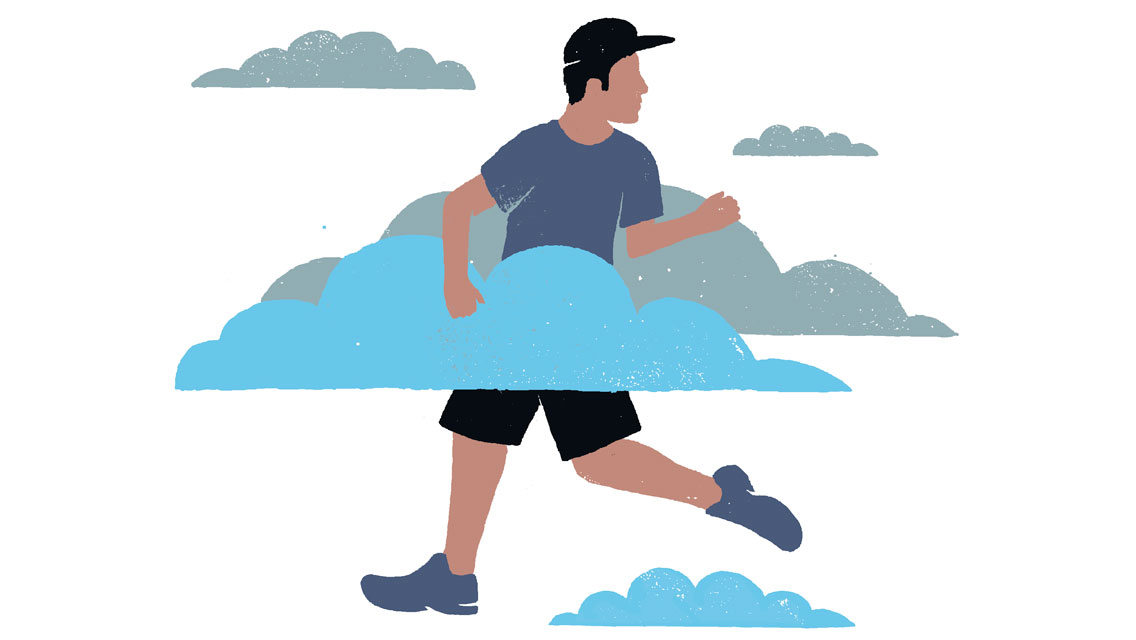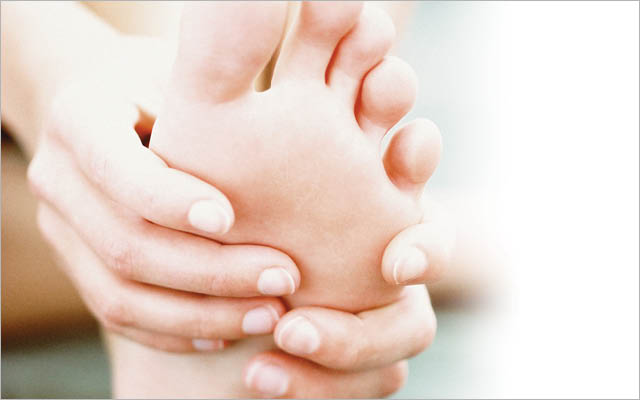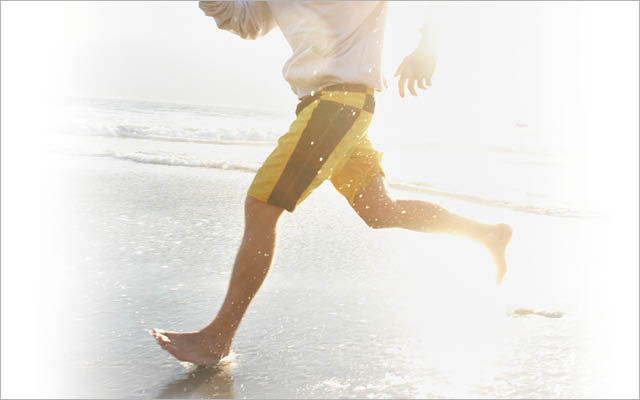Yasmin El-Sayed had been a runner since high school, but she never experienced pain until she began training for her first marathon during her senior year of college. “I started feeling discomfort in my knee, but I thought that was normal,” she says. During the race, the pain spread to her quadriceps and hips.
In the months and years that followed, the pain got worse. Even walking for any significant distance would trigger it. “My lower back and hip area always hurt,” she recalls. She had no idea what to do about it — other than dramatically reduce her activity level — until she came across an article about orthotics as a pain solution. She immediately contacted a podiatrist.
After studying her running and walking gait and observing the balance of her hips, the doctor determined that her left hip sat higher than her right, causing oversupination, or an outward rolling of both her feet that put undue stress on her lower extremities, which in turn relayed that stress into her hips and lower back.
The doctor fitted El-Sayed with a set of orthotics — in her case, hard plastic heel molds — and prescribed stretching exercises. She began feeling relief immediately. “My entire physical experience changed,” says El-Sayed, now 24 and entering her second year of medical school at the University of Pennsylvania.
Today, El-Sayed is more active than ever — she belly dances, swims and does yoga to keep her body balanced. She’s even back to running, and is training for the 2010 ING New York City Marathon.
It’s not only runners who can benefit from orthotic support, though. Whether you golf, play tennis, shoot hoops or just get around each day, if you experience pain in your ankles, shins, knees, hips or back, you might just benefit from a little extra support of your own.
Step by Step
Orthotics, or “functional foot orthoses,” have become increasingly popular in sports circles in recent years. And for good reason, say health professionals. These customized shoe inserts help normalize biomechanical problems that cause your feet to strike the ground unevenly.
The normal gait, or movement, of the foot is a figure-eight pattern, explains Scott Bautch, DC, of Allied Health Chiropractic Centers in Wausau, Wis. It begins at the back outside of the foot, moves along the outer edge, rolls across the arch to the ball, out to the little toe, and back again. “Almost all conditions related to the foot are the result of the loss of that figure eight,” he says.
Those conditions include shin splints (when tendons that connect to the tibia get irritated or injured), ankle sprains, Morton’s neuroma (a painful inflammation of the nerve between the third and fourth toes), and stress fractures of the tibia, calcaneus (heel) and metatarsals (toes).
For people like El-Sayed, the right orthotic can adjust the way the foot strikes the ground and thus properly redistribute the energy of impact up the kinetic chain. For other conditions, such as leg-length discrepancy, an orthotic will provide the lift that balances your body more evenly.
Know Your Pain
Most active people know that pain experienced during an activity is a red flag (unless it’s pain of the “hurts good,” pushing-your-muscles-to-the-max variety). But before you conclude that orthotics will solve your pain problem, you should eliminate other potential contributing factors.
First, are you training properly? Increasing your training load too quickly, for example, can put tremendous and sudden strain on the feet and lower extremities. You should also look at whether you are cross-training or stretching enough. Both can help counter overuse injuries that can exacerbate biomechanical issues.
“If you’re beating your body up, it’s not your anatomy that’s the problem,” says Stephen Rice, MD, director of the Jersey Shore Sports Medicine Center at the Jersey Shore University Medical Center in Neptune, N.J., and a fellow of the American College of Sports Medicine.
Next, do you have the right shoes for your activity? “A proper-fitting and well-designed athletic shoe is the first step to preventing injury and enhancing performance,” says Matt Werd, DPM, coeditor of Athletic Footwear and Orthoses in Sports Medicine. Consider the surfaces you’re performing on — if you’re running or jumping on pavement, for example, you might need extra cushioning in your shoes to help absorb that pressure. (Please note: This runs counter to what barefoot-training proponents say, and the difference, podiatrists say, is gait efficiency — if you have gait problems, you’re likelier to need more cushioning.)
Cushioned over-the-counter shoe inserts provide extra shock absorption and mild arch support that may be enough to relieve mild pain and discomfort. Some sports doctors suggest that they’re worth trying upon the first signs of discomfort, but if you’re suffering from a biomechanical problem, such as leg-length discrepancy, severe overpronation or oversupination, they won’t solve the problem.
If you’ve ruled out all of these factors and still experience pain, consult a qualified foot or sports-medicine professional to see about orthotics, says Rice. “The person who benefits from orthotics is the person wearing the appropriate shoes and doing the appropriate level of training, and who still becomes symptomatic,” he says. These are also the folks who have the best chance of convincing their health-insurance company to help cover the cost of custom orthotics, which can range in price from a few dollars to a few hundred.
For El-Sayed, the outlay for custom orthotics was well worth the investment. “I use my orthotics during all my activities now,” she says. “I’m so grateful not to be in pain anymore.”
Orthotics Q&A
How do I know if I need orthotics?
Foot and sports-medicine doctors say if you’re training properly and wearing the right footwear, yet still experience foot, ankle, knee, hip or back pain, you’re probably suffering from a biomechanical problem that might benefit from orthotic support.
What’s the difference between over-the-counter inserts and custom-made orthotics?
Companies like Superfeet, Spenco and Dr. Scholl’s make shoe inserts that can provide cushioning and mild to medium arch support. Sometimes that’s all you need. But if you’re suffering from a more severe biomechanical problem, these won’t be enough — you need an orthotic designed specifically for your body.
How do I get custom orthotics made?
First, see a sports-medicine doctor, podiatrist, chiropractor or other qualified health professional for an assessment. (See “Find a Foot Pro” below.) He or she will ask you to walk or run to observe your gait (the way your feet and body move). He or she may also ask to see your athletic shoe to study the wear pattern on the sole.
Other tests may be taken, such as a force-plate diagnosis, which measures the amount and distribution of pressure your foot places on the ground. These tests will inform the doctor of your biomechanical function and help him or her design an orthotic to normalize it.
After that, a mold of your foot will be taken, which is then shaped into a customized device made from either a plastic polymer, graphite or cushioned substance such as leather. You should wear new orthotics for a few weeks and then check back with your doctor to see if any adjustments are necessary.
Find a Foot Pro
There are a variety of different health professionals — from podiatrists to chiropractors — who specialize in foot and sports injuries and can fit orthotics. Start with the following association Web sites, or try inquiring at your local specialty sports store.
American Academy of Podiatric Sports Medicine: www.aapsm.org
American College of Sports Medicine: www.acsm.org
American Chiropractic Board of Sports Physicians: www.acbsp.com
This article originally appeared as “Best Foot Forward” in the July/August 2010 issue of Experience Life.



This Post Has 0 Comments